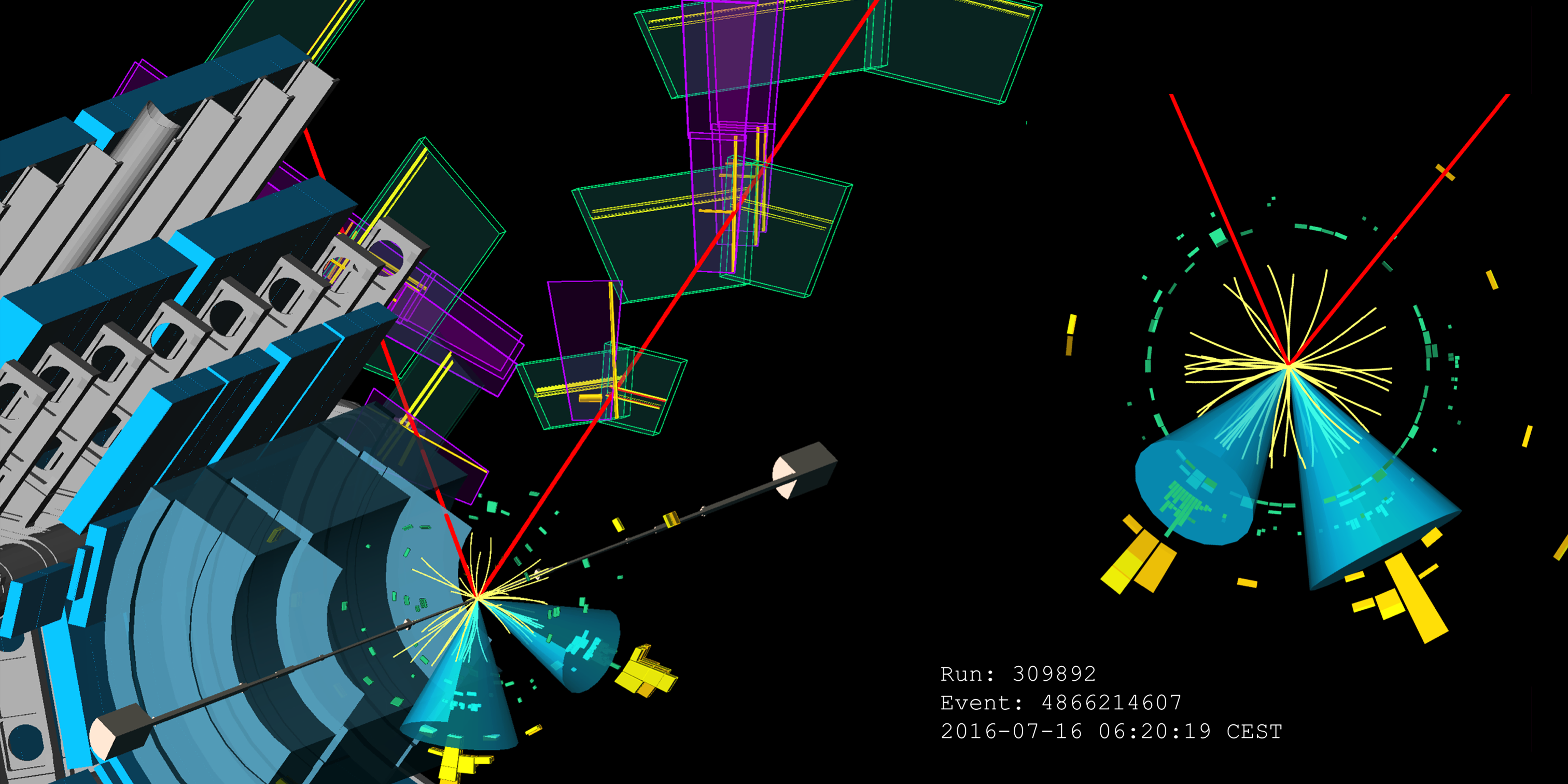The beauty and the charm of the Higgs boson
22 July 2024 | By
The Higgs field permeates the Universe, giving rise to the masses of most known fundamental particles. According to the Standard Model, the interaction rate of the Higgs boson with a given particle should be related to the particle’s mass. Testing this theory is vital for understanding the mechanism of mass generation and probing for new physics phenomena. However, measuring these interaction rates – particularly with quarks – has been difficult due to experimental challenges.
The ATLAS Collaboration has just released the world’s most precise study of the Higgs boson’s interaction with bottom quarks and charm quarks. This new result is a re-analysis of data collected during Run 2 of the LHC (2015-2018). ATLAS researchers examined Higgs-boson decays to bottom and charm quarks (H→bb and H→cc) implementing significantly improved analysis techniques. This was the first simultaneous investigation of both processes and targeted Higgs bosons produced with a W or Z boson (WH/ZH), leading to the most detailed measurement of the production rate (cross section) of WH and ZH production.
Boosting detection

To achieve their new result, researchers took advantage of the similarities in the experimental signatures of H→bb and H→cc decays, both of which produce pairs of particle “jets”. The ATLAS team used a more powerful jet-identification algorithm and developed a bespoke jet-identification scheme to spot jets originating from charm quarks (c-jets) and bottom quarks (b-jets), increasing the sensitivity for H→cc events by 15% compared to a previous analysis of this dataset. Additionally, the H→bb events were categorised based on the total reconstructed transverse momentum of the W or Z boson. In the “resolved” category, the two b-jets from the Higgs boson decay are reconstructed as individual jets while in the “boosted” category, the two b-jets are reconstructed as a single large-radius jet. This breakdown is shown in Figure 1.
To maximise sensitivity in all three categories, researchers used machine-learning-based tools to classify events as “signal” or “background”. These tools had previously been used on the “resolved” H→bb regime and, in this analysis, were extended to the “boosted” H→bb and H→cc categories, leading to a 40% better sensitivity.
A significant amount of work went into reducing the measurement’s dependence on assumptions of the expected background contributions by designing and refining “control regions”, where auxiliary measurements of all main background processes are performed. Researchers also improved their reconstruction of the Higgs boson mass, applied a dedicated treatment of WH events where the W decays to a tau-lepton and a neutrino, and developed techniques to enhance the statistical power of simulated data sets. These are but a few of the new techniques used in this result. Overall, ATLAS physicists improved their sensitivity to H→bb by 15% and to H→cc decays by a factor of three.
The ATLAS Collaboration releases the world’s most precise study of the Higgs boson’s interaction with bottom quarks and charm quarks.
Measuring the beauty and charm
The ATLAS Collaboration reported the first observation of the WH,H→bb process with a 5.3σ significance, and measurement of ZH,H→bb with a 4.9σ significance. Physicists also concluded, at a 95% confidence level, that the production rate of the VH,H→cc process is not larger than 11.3 times the Standard Model expectation. These results are the world’s most precise probes of these processes and are compatible with the Standard Model.
New physics phenomena could impact the Higgs boson’s production rate and decay. To study this, researchers measured the WH and ZH cross sections, including for the first time above 600 GeV. Both were found to be in good agreement with the Standard Model, as shown in Figure 2. The ATLAS team also studied whether the Higgs boson interacts more strongly with the bottom quark than the charm quark, due to the differences in masses of the quarks. They measured the ratio of H→bb to H→cc decay rates, without making prior assumptions on other Higgs boson decay modes. It was confirmed for the first time at the 99.7% confidence level, that the Higgs-charm coupling is weaker than the Higgs-bottom coupling as expected in the Standard Model (see Figure 3).


These results provide crucial new understandings of how the Higgs boson interacts with quarks. They are the most precise and detailed probes of these processes to date, firmly establishing H→bb decays as a precise probe of VH processes that can be used for more detailed measurements in the future. The advancements in the search for H→cc decays heighten anticipation for the High-Luminosity LHC (HL-LHC), where detecting this process enters the realm of feasibility.
Learn more
- Measurements of WH and ZH Higgs production with decays into bottom quarks and direct constraints on the charm Yukawa coupling with 13 TeV collisions in the ATLAS detector (ATLAS-CONF-2024-010)
- ICHEP 2024 talk by Francesco Armando Di Bello: Measurements of Higgs boson coupling properties to bottom quarks and charm quarks with the ATLAS detector
- Combination of measurements of Higgs boson production in association with a W or Z boson in the bb decay channel with the ATLAS experiment at 13 TeV (ATLAS-CONF-2021-051)
- Measuring the beauty of the Higgs boson, Physics Briefing, April 2020
- Studying the Higgs boson in its most common – yet uncommonly challenging – decay channel, Physics Briefing, December 2020
- ATLAS sees a difference between beauty and charm decays of the Higgs boson, Physics Briefing, February 2022




